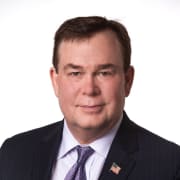So You Say You Want College Football In 2020? Then put on a damn mask

Okay. The July 4 Holiday weekend is over and when it comes to the fate of the 2020 college football season we are quickly approaching crunch time.
How do we know this?
Look at the calendar.
And look who’s talking about college football and the coronavirus.
Earlier in the year it was not uncommon to see football coaches like Nick Saban and Ed Orgeron don masks and encourage their fan bases to do the basics of social distancing and avoiding large crowds in order to slow down the growth of the virus.
But as we get closer to the hopeful start of the season, it appears some people aren’t listening.
Among the states that have seen record growth in the virus in recent weeks are Texas, Florida, California, Arizona, Georgia, South Carolina and North Carolina. Not good.
Finally, just before the Holiday weekend, frustrated political leaders took to airways and played the college football card.
Birmingham Mayor Randall Woodfin appeared on The Paul Finebaum Show last week and was clearly exasperated with the citizenry:
“Cover your mouth. It’s not rocket science,” he said. “It’s silly that we can’t do the simple things. It’s baffling to me.”
Then Woodfin said this:
“Here’s where we are with college football coming up in the Fall. The plainest way to put it is to put these college football coaches out there and let them repeat these words:
‘Wear a damn mask if you want to see college football this Fall.”
Boom!
Georgia Governor Brian Kemp, a big Bulldog football fan, went on a seven-city tour last week and was not at all hesitant to say that college football season could be hanging in the balance based on how people behave in the next few weeks.
“If people, especially our young people, don’t start wearing a mask when they are going out in public and our numbers keep rising that (playing college football this Fall), is going to be a tall task.”
It is worth noting, however, that Kemp has also declined to make masks mandatory in Georgia.
South Carolina governor Henry McMaster warned last week that if the current rate of infection continued he would not allow high school and college football to be played in the state.
“If these numbers continue to rise and the danger persists I can’t do it,” McMaster told the Greenville News last week. “I won’t do it.”
So where are we?
Today is July 6. There are 25 days left in this month and then 29 days in August before the first games. Just about everybody opens on Sept. 5.
It’s going to go by quickly.
In my last conversation with SEC Commissioner Greg Sankey he felt there was enough runway to make the tough decisions that would have to be made about college football. But he also conceded that “with every day a little more of that asset slips away.”
SEC Media Days, originally scheduled for July 13-16 in Atlanta, has been postponed with the hope of rescheduling it as a virtual event.
The players started returning to campus in June for physical conditioning and testing. For some schools it has gone well. For others it has not gone so well.
Both Kansas and Kansas State have discontinued their voluntary workouts after a total of 30 athletes in all sports tested positive.
Clemson had 37 positive tests in the month of June. Players have been quarantined but as of June 26 there had been no hospitalizations, according to a report on ESPN.com. Published reports had 30 players at LSU in quarantine because they tested positive or were exposed to someone who had tested positive.
All those numbers are concerning.
But on a recent appearance with Paul Finebaum, Sankey pointed out that when the decision was made to bring the players back in June, the schools knew and were prepared for the fact that there would be positive tests and that players would have to be quarantined.
“The reality is that we’re in a time of uncertainty,” Sankey told Finebaum, emphasizing that those under quarantine are getting quality medical care.
And don’t forget this: These players are testing positive at a time when students aren’t on campus. That comes in August when the players are scheduled to be in preparations for their first game.
Will there be yet another spike in positives when the students return?
The University of Southern California announced last week it would not be bringing students back to campus for the Fall semester. What happens if more schools follow?
"Unless we see a change in the trajectory of the spread of the virus and its impact pretty quickly, I think the situation's a lot more perilous than it was a few weeks ago," Pac-12 Commissioner Larry Scott told NCAA.com. “No one can predict what the Fall is going to look like, in my opinion.”
Scott’s right. We don’t know what the world is going to look like in August. Even if everybody involved—players, coaches, fans, and administrators—does everything right we don’t know if it will be enough to play the games safely.
So these decisions are coming. But until then please do all of us who love college football a favor:
When you leave the house, put on a damn mask.
